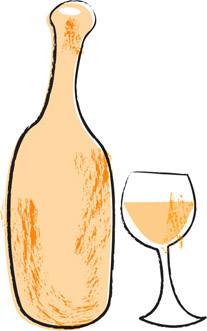
“Let me tell you the one thing I have against Moses. He took us forty years into the desert in order to bring us to the one place in the Middle East that has no oil!”
—GOLDA MEIR
Passover is all about the seder, meaning traditional fare such as charoset, gefilte fish, and matzo ball soup. For “the Festive Meal” (as we Markses like to call it), we went with a delicious roast turkey (though you can sub in any of the brisket or chicken recipes) alongside fresh vegetables, and Passover matzo rolls. For dessert, Aunt Frieda’s nut cake is always a winner, but Passover brownies and almond macaroons are sure to disappear just as quickly. And what’s Passover without matzo brei? Our recipe will introduce you to a secret ingredient sure to surprise and delight. If these aren’t enough, be sure to check the Take-Along and Comfort Foods chapters for more Passover-approved desserts.

Moderately Priced Red:
Recanati Yasmine Red (Israel), Kosher
Special-Occasion Red:
Yarden Cabernet Sauvignon (Israel), Kosher
Moderately Priced White:
Recanati Yasmine White (Israel), Kosher
Special-Occasion White:
Goose Bay Sauvignon Blanc (New Zealand)
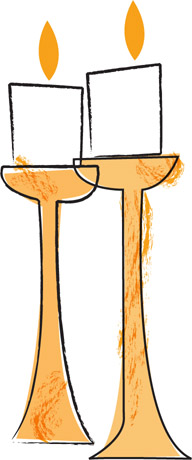
“Instead of a seder, one year my family and I decided to do something a little different . . . so we had a Yiddish lesson. It was hilarious!”
—JILL, NEW YORK CITY, NEW YORK
“My wife and I live far from our families, so my mother makes care packages for the holidays every year. Usually it’s overloaded with food, but she looks for weird objects to include. One year for Passover she sent us a box of plush toys representing the icons from the seder—an egg, a lamb shank, etc. . . . ”
—SCOTT, HOLLYWOOD, FLORIDA
“Here in Brazil on Easter we have a big thing about chocolate eggs. One month before the holiday all the shops and supermarkets sell a variety of huge chocolate eggs filled with candy, and people give each other those chocolates—it’s a big thing for kids. When we were younger, my grandparents used to hide the chocolate eggs on Passover instead of matzo, so we were more motivated to look for it around the house . . . and then after negotiate the afikomen.”
—LINA, PORTO ALEGRE, BRAZIL
“Since my niece, Rachel, was about sixteen years old, she has kept a list of everyone who has attended my sister’s seder in Kansas City, Missouri. It’s in the back of one of the Haggadahs, marked with her name on it. Every year when we go to Kansas City, it’s fun to see who is there, who attended last year and the year before that. It’s also a time to add the names of husbands and wives and babies, and to see how the family is expanding, as well as to remember those who are no longer with us.”
—DEDE, MIAMI, FLORIDA
“My mom goes all out on Passover to help explain the plagues to my nieces through live table theater. I mean, the woman actually buys rubber bugs to signify locusts and throws them on the seder table. Boils are cotton balls with band-aids, and red dye is water turning into blood . . . it’s a real treat to see live!”
—STACY, PHILADELPHIA, PENNSYLVANIA
“The first year I lived with my Israeli husband, he came up to me on the first day of Shavuot [a Jewish holiday that follows Passover and commemorates receiving the Torah from God] and cracked an egg on my head! While I was getting over my shock, he explained to me that during Shavuot in Israel, all of the kids run around in the streets and have egg, water balloon, and silly-string fights. Now, when Shavuot rolls around, I always manage to dump some cold water on my hubby’s head when he least expects it.”
—JULIE, WASHINGTON, D.C.
“I grew up in a household that celebrated all holidays, Jewish and Christian, but was never prone to one or the other until later in life. . . . When I was younger, my mom decided to host Passover and, it being her first time, she was a little nervous. My grandmother brought the brisket and matzo ball soup, and my mother made all of the other preparations for dinner. I was probably about twelve years old at the time and just starting to help my mom with planning and carrying out family functions. As we all know and do at Passover dinner, everyone takes turns reading the traditional stories and prayers associated with Passover. I was asked to read a portion of the reading and, being twelve and a little nervous in front of my family of twenty, reluctantly I agreed. All was going fine with the reading and pronunciation until for some unknown reason instead of saying the word ‘Egypt’ I said ‘Jesus’ instead. My grandmother spit out her food and everyone started hysterically laughing. I, of course, was embarrassed and, at the time, they all made me feel fine about it. But there is not a Passover dinner that goes by without my slip being brought up!”
—JAMIE, WEST PALM BEACH, FLORIDA
“My little brother was super-competitive and had a terrible temper, so at every Passover my family would hide TWO afikomen: one for him and one for the rest of us!”
—JODI, RYE BROOK, NEW YORK
Roz grew up watching her mother and grandmother grind the liver in a meat grinder that used to screw onto the side of the kitchen table, which is why for many years she bought her chopped liver. With the introduction of the food processor (Cuisinart), there is no excuse to not make it yourself. It really is easy and delicious.
SERVES: 8–10 PREPARATION TIME: 30 MINUTES
6 peeled cold hard-boiled eggs
½ cup vegetable oil
1 large onion, chopped
1 clove garlic, minced
1 pound chicken livers
2 teaspoons salt
1 teaspoon pepper
SERVES: 6
1 24-ounce jar all-white gefilte fish, Manischewitz or Mother’s
Serve with mild horseradish, red or white.
Once and for All: The Four Questions
Why does this night differ from all other nights? For on all other nights we eat either leavened or unleavened bread; why on this night only unleavened bread?
On all other nights we eat all kinds of herbs; why on this night only bitter herbs?
On all other nights we need not dip our herbs even once; why on this night must we dip them twice?
On all other nights we eat either sitting up or reclining; why on this night do we all recline?
My brother David has quite a way with words. He was also, growing up, a very, very picky eater. The one thing he always loved, though, was a good chicken soup with matzo balls—or to paraphrase his younger self, “white meatballs!”
SERVES: 8–10 PREPARATION TIME: 15 MINUTES COOKING TIME: 3–3½ HOURS
1–2-pound whole chicken (or cut up)
3 stalks celery with ends cut off
5 peeled carrots
¼ bunch fresh parsley tied together with thread
1 medium onion (you can cut in half to fit better in pot)
3–3½ quarts water (depending on the size of the chicken)
Salt and pepper
MAKES: 12 BALLS PREPARATION TIME: 20 MINUTES COOKING TIME: 30–40 MINUTES
4 large eggs
½ cup vegetable oil
1 cup matzo meal
½ teaspoon salt
* If you want to prepare this dish a day or two ahead of time, add the matzo balls to the soup before refrigerating. By sitting in the soup, the matzo balls will take on the taste of the broth. When your guests arrive, simply remove from the fridge and reheat.
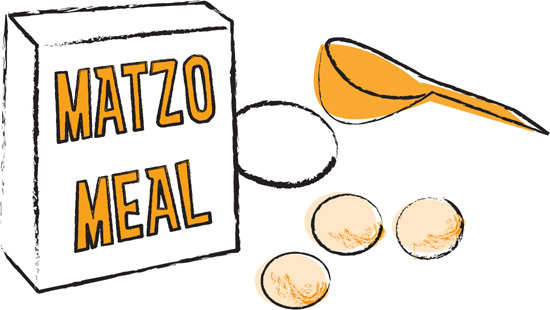
This is a simple traditional recipe for charoset. Make it at least a day ahead of time so that the apples soak up the honey and wine.
SERVES: 8 PREPARATION TIME: 30 MINUTES REFRIGERATE FOR AT LEAST 4–5 HOURS, PREFERABLY OVERNIGHT
10 peeled, cored and chopped apples (Gala, Red Delicious, or Fuji)
1¼ cups chopped walnuts
12 tablespoons honey
2½ teaspoons cinnamon
Mogan David grape wine to taste (⅛–¼ cup)
Mix all ingredients together and refrigerate for a minimum of 4 to 5 hours.
* When serving, put the charoset into three or four different bowls up and down the table for easy access, as everyone seems to eat it throughout the seder and the meal.
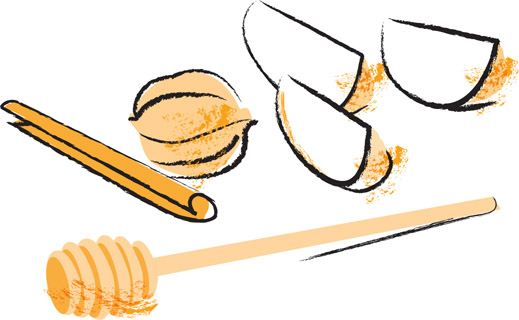
Creating Your Own Haggadah
Roz’s husband (and Andrea’s father), Allan, is usually handed the daunting task of leading the Passover seder. After years of trial and error, he has finally come up with a workable strategy for creating a family Haggadah. We asked him to share his knowledge.
“Whoever enlarges on the telling of the Exodus is praiseworthy.”
Among all the Jewish holidays, none has a greater direct relationship to food than Passover. In fact, the central fixture of the Passover table is a seder plate containing specific foods that are consumed for the sole purpose of identifying with the Exodus of the Jews from their slavery in Egypt.
Parsley, one of the bitter herbs on the seder plate, represents the bitterness of slavery, while the salt water represents the tears shed by the Jews while in bondage in Egypt. The foods on the seder plate are physically joined with each diner by their consumption during the retelling of the Exodus in the Haggadah. Haggadah actually means “telling” and is a fulfillment of the scriptural commandment to each Jew to “tell your son” about the Jewish liberation from slavery in Egypt, as described in the book of Exodus in the Torah. (Next time you watch The Ten Commandments, there is a scene about ninety seconds long in which Moses, portrayed by Charlton Heston, performs a small portion of the seder before he leads the Hebrews to freedom.)
While the Haggadah is designed to be a “narrative,” very little of the classic Haggadah is devoted to a simple telling of the Exodus story. Instead, the rabbis wove a variety of activities into the seder event that purportedly serve to highlight the values of the Exodus and enable the participants to “learn by doing.” Presently more than three thousand known editions of the Haggadah exist, and in recent years a new effort has begun to express the story of the Passover in contemporary terms and with allusions to current struggles. There have been many textual additions to the Haggadah as well as commentaries on the meaning of the texts and actions over the ages; still, a basic structure (seder means “order”) remains.
Therein lies the rub. It is unusual to find a Jew who cannot recount at least one seder, normally experienced as a child, as “taking forever before we finally ate.” The reality is that a seder can last as long as several hours and can be as short as thirty minutes. The length of the “telling” is normally a function of the length of the Haggadah. Our own experience has been instructive and may assist you in determining how to “tell” of the Exodus.
When we were first married we would normally celebrate Passover at Roz’s parents’ home, and the full-length Haggadah was the operative version. Normally, somewhere between sixty and ninety minutes were dedicated to the “telling” before we could begin the “festive meal.” The unspoken irony was that there were initially no children at the seder and all the participants had been “told” the story many times before. These seders tended to focus on the prayers and songs, sometimes at the expense of the drama associated with the story of delivery from bondage. This same seder was repeated for many years, despite the fact that the numbers of those sons (and daughters) to be “told” were expanding.
As we became the “tellers” of the story, we decided to try some alternatives. One year we focused almost exclusively on the content and meaning of the seder plate. I located a wonderful Web site, The Virtual Seder Plate, and I printed out the explanation of each part of the seder plate. I distributed a section to some of our family and guests, which they read aloud. We learned quite a bit about the objects associated with a religious observance we had witnessed or performed many, many times before. We did “tell” the story, but on that particular night we focused on the symbolic nature of each item. It was a great way to celebrate Passover, and we have done it again on more than one occasion. On another Passover I had just finished reading Mystic Quest: An Introduction to Jewish Mysticism, by David Ariel, and we incorporated some aspects of Kabbalah into our seder.
As our children grew older and we were blessed with the arrival of our own grandchildren, we finally put our gelt where our mouths were and created our own Haggadah. As with most things that are on one’s lifetime “to-do” list, the anticipation was much more difficult than the doing. We made a decision to “tell” the story of the Exodus with more emphasis on the “why” and not the “what.” If you have the desire to make your own Haggadah, the basic outline (which we have provided below), an older Haggadah that is comprehensive, and access to a computer, you will find that by dedicating a few hours an evening over the course of a week, you will have become “praiseworthy.” Begin with the understanding that the seder and the Haggadah consist of the following segments:
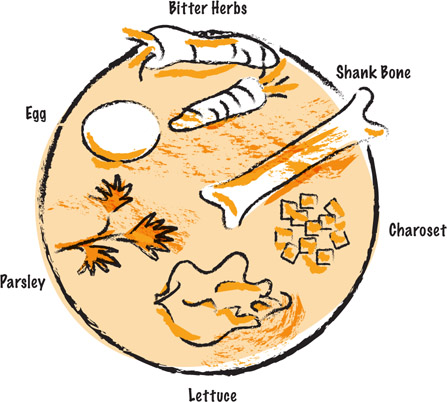
Sanctifying the holiday;
Washing the hands;
Eating the green vegetable dipped in salt water;
Breaking the middle matzo;
Reciting the narrative;
Washing the hands (before eating the meal);
Blessing for the bread and the matzo;
Eating the bitter herb;
Eating the matzah with the bitter herb;
Eating the meal;
Finding the afikomen;
Reciting the grace after meals;
Singing Psalms of praise; and Concluding with the hope that the Exodus has been told with the appropriate intention.
After that, it is totally in your hands. I used normal search engines and simple search terms on Google to find more resource information than I ultimately needed to create precisely what we wanted. I would strongly suggest that when you are creating your own Haggadah, you consider the anticipated changes in the size of your family (the new members, the relative attention span of all members); their general personal religious convictions; and their ability to become an unruly mob. Armed with this knowledge, create your Haggadah with sections that can be utilized or passed over (no pun intended) at any particular seder. Keep in mind who you are “telling” the story of Exodus to. Don’t lose sight of the scriptural commandment in favor of scripture. There are a number of Web sites with a lot of Judaic clip-art on the Internet (some free) that can make your personal Haggadah more pleasing to the eye and interesting for the younger participants.
If you use your computer and some simple search terms, there are innumerable Web sites that have a lot of information about the Passover holiday. Most of them also make great suggestions for including young children in the seder (for example, when telling of the plagues that befell the Egyptians, get some plastic animals to portray the frogs and beasts; ping-pong balls or plastic golf balls for hail; red food coloring for blood, and so on).
Having had this experience, I strongly encourage you to create your own Haggadah at the time best suited to you and your family. By the way, at the end don’t forget to include the phrase “Shulchan Orech” or “The Festive Meal.” Hopefully it will become for you, as it has for our family, the segue from your “telling” to a wonderful family meal with the incredible food found in this book.
It may not be the healthiest option on the table, but it’s certainly the tastiest (in Andrea’s humble opinion). This soufflé is also a great vegetarian option—it’s savory and filling, and even better reheated with leftovers the next day.
SERVES: 6–8 PREPARATION TIME: 15–20 MINUTES COOKING TIME: 35 MINUTES
2 10-ounce packages frozen broccoli
1 cup mayonnaise (I prefer Hellmann’s)
1 10¾-ounce can cream of mushroom soup
1 tablespoon apple cider vinegar
2 eggs, well beaten
1 8-ounce package shredded cheddar cheese
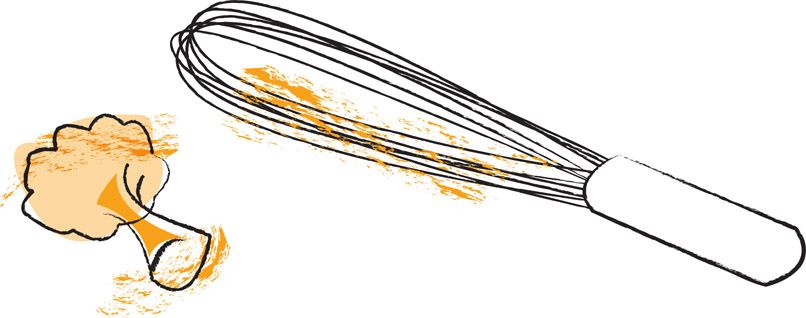
Most everyone knows how to roast a turkey, but not necessarily how to make a moist and juicy one. After years of trial and error, and many dry turkeys, we have found a way that seems to work every time. The secret is roasting the turkey with the breast side down and making sure there is always chicken broth in the bottom of the pan. We flip the turkey for the last 45 minutes to crisp the skin, but baste the breast side every 15 minutes as well.
SERVES: UP TO 15–18 PREPARATION TIME: 30 MINUTES COOKING TIME: APPROXIMATELY 3–4 HOURS
12-pound turkey
1 stick margarine
Salt
Pepper
Garlic salt
1 16-ounce box chicken broth
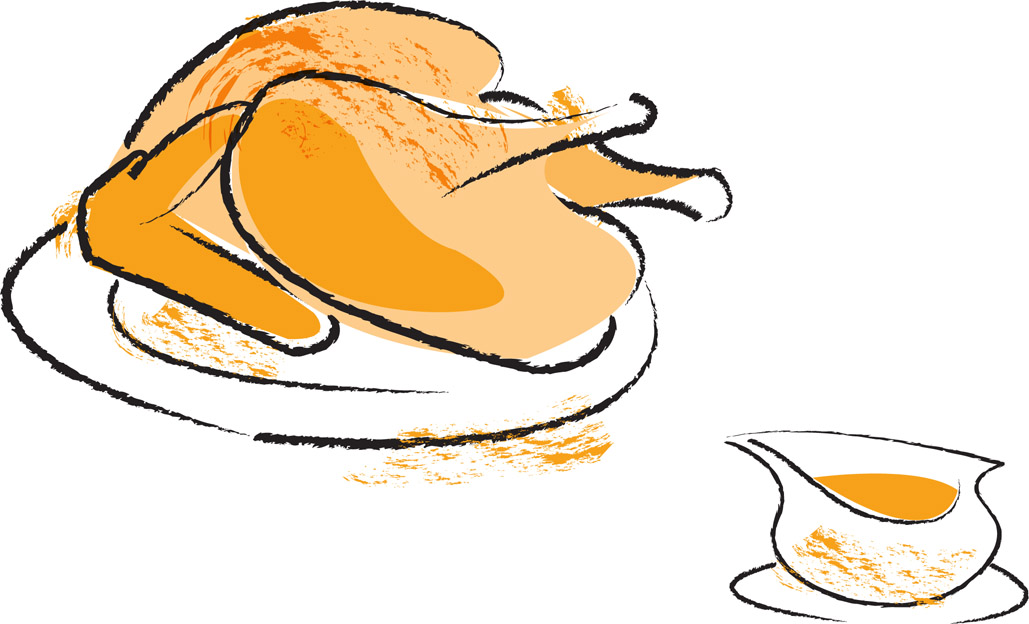
* Let the turkey sit for at least 30 minutes before slicing. Add salt and pepper to taste if needed.
* For gravy, simply use the juices at the bottom of the roasting pan. Just put the juices in a pot, skim off excess grease, and reheat on top of the stove when ready to serve.
The Burning Question: Everything You Ever Wanted to Know about Matzo
It’s no secret that matzo is far from most people’s favorite food—especially once you hit the third or fourth day—but how bad is matzo for you nutritionally? We asked Mandi Pek (M.S., R.D., C.S.P., C.D.N., and friend of Andrea) and got the facts.
On a scale of 1 to 10, how nutritious is matzo?
One sheet of matzo has about the same nutritional value as a slice and a half of bread. Matzo can fit into a healthy Passover diet, but the cardboard has calories. On its own, it’s probably about a 2.
Any dietary issues with eating matzo for eight days?
Yes! Matzo can cause constipation. To help avoid this, it’s really important to make sure that you are drinking a lot of water. Aim for eight 8-ounce glasses a day. Avoid beverages that dehydrate you like alcohol and caffeine.
It is also very important that you eat more fiber. In general we need 25 to 30 grams of fiber a day. However, if you’re eating a lot of matzo, up to 38 grams of fiber a day may be helpful. Be sure to add fiber slowly into your diet to avoid abdominal pain and bloating. Insoluble fiber can be found in many foods including avocados, whole grains, apples with the skin, beans, and many other fruits and veggies.
Any benefit to specific kinds of matzo such as thin tea, whole wheat, egg, or plain matzo?
All of the different types of matzo provide approximately the same number of calories per board, usually between 80 and 110 calories per serving. Some brands of egg matzo are slightly higher in fat. Some brands of whole wheat have more fiber than plain matzo. It seems to be brand specific, so it’s important to read the nutrition label on the box and look for at least 3 grams of fiber per serving.
Any benefit to cooking with matzo meal over eating plain matzo?
Matzo meal is just ground up matzo. So the amount you use and what you cook would determine whether or not it is healthier than plain matzo. For example, matzo balls and matzo brei using matzo meal can vary tremendously in the number of calories per serving depending on how they were cooked. Matzo brei are usually made with eggs and oil and then fried. This can make for a very high-calorie meal. Using cooking spray and egg whites can help to decrease the number of calories per serving.
What can we add to or put on matzo to offset the heaviness and help with digestion?
During Passover what we put on our matzo is often more calorically dense then the matzo itself. We tend to add things like cream cheese, butter, peanut butter, or cheese, all of which are high in calories and fat. Adding turkey breast, roast beef, or low-fat tuna would be a better option. Add a side salad with kidney beans and avocado to increase your fiber and help prevent constipation.
What kinds of foods should we add to our diet during Passover to keep things more balanced?
Passover is a perfect time to start eating healthier. Enjoy salads with grilled chicken and a small piece of matzo on the side, or have some low-fat cottage cheese and a sliced apple. Whether it’s Passover or any other time of the year, every meal should contain protein, fat, and carbohydrates. Using matzo as a side, like you would a dinner roll, rather than as the main focus of the meal should help prevent stomach upset from this very binding holiday. And always remember to drink plenty of fluids!
These rolls are a real Passover favorite. They taste amazingly bread-like and are a welcome respite from matzo overload. Aside from dinner, they are a great way to make sandwiches during Passover.
SERVES: 6–8 PREPARATION TIME: 20 MINUTES COOKING TIME: 50 MINUTES
2 cups matzo meal
1 teaspoon salt
1 tablespoon sugar
½ cup peanut oil or vegetable oil
1 cup water
4 eggs
* These are delicious when warmed in the oven just before serving.
* The rolls will keep well for 2 days in a sealed baggie.
Who doesn’t like buttered potatoes? The petite reds look pretty as well in a bowl or on a platter.
SERVES: 8–10 PEOPLE PREPARATION TIME: 5–10 MINUTES COOKING TIME: 15 MINUTES
3 pounds petite red potatoes
4 tablespoons butter or margarine
Salt and pepper to taste
Parsley flakes
* Use leftovers for hash browns the next night—delicious! (Dice an onion and cut up the potatoes; add 2 tablespoons butter or margarine, and brown to crisp.)
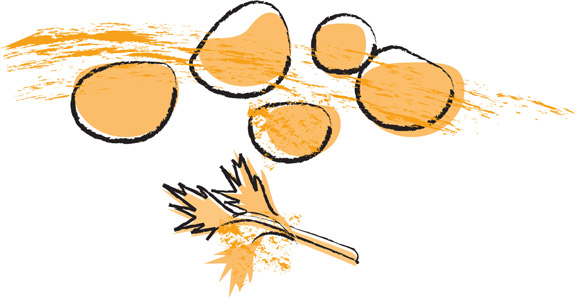
This dressing is sweet and tangy. It really adds a little kick to the meal.
MAKES: ABOUT 3 CUPS, SERVES 24
1 cup red wine vinegar
2 cups vegetable oil
10 tablespoons sugar
1 clove garlic, peeled and minced
1¼ teaspoons Dijon mustard
Juice of ¼ lemon
1¼ teaspoons black pepper
¼ cup dried cranberries (Craisins)
½ cup bleu cheese or feta
* For a more traditional taste, leave out the dried cranberries and cheese.
* The dressing will keep in the fridge for a week.
Passover desserts, especially chocolate ones that are good, are hard to find. These brownies are some of the best we’ve had.
SERVES: 6–8 PREPARATION TIME: 15–20 MINUTES COOKING TIME: 30–35 MINUTES
4 eggs
2 cups sugar
½ cup unsweetened cocoa
1 cup oil
½ teaspoon salt
1 cup Passover cake meal
1 cup chopped walnuts
2 cups chocolate chips
Roz’s Aunt Frieda always made this cake for Passover, and Roz looked forward to it every year—even freezing leftover pieces. For some reason no one in our family writes down their recipes (until now!), but one of the last times Frieda made the cake Roz’s mom, Edith, wrote down everything so she could pass it along to us. It’s so good you really could make it all year long.
SERVES: 8–10 PREPARATION TIME: 45–50 MINUTES COOKING TIME: 1 HOUR
2 eggs
2 cups sugar
1 pound ground pecans
¼ cup Passover cake meal
2 lemons, juice and zest
* Place the cake in the fridge to cool faster before icing.
½ cup butter or margarine
½ cup unsweetened cocoa
⅓ cup milk
1 16-ounce box confectioners’ sugar
1 teaspoon vanilla
* The cake freezes very well. After cooling it completely in the refrigerator so the icing hardens, wrap the cake in waxed paper and then again in aluminum foil and place in the freezer. The waxed paper will keep the icing from sticking to the foil.
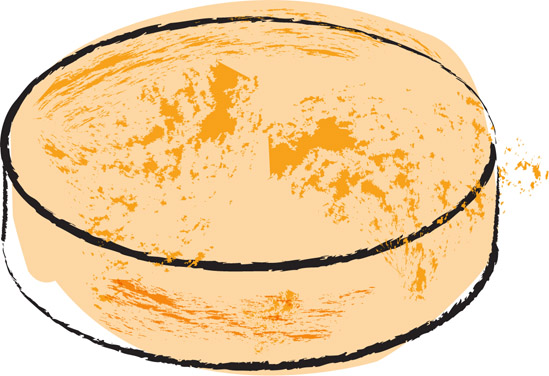
Anyone who loves almond macaroons will be making these by the dozens. They are easy to make and better than any you can buy at a bakery. Plus they are a lot cheaper to make than to buy!
MAKES: ABOUT A DOZEN PREPARATION TIME: 20 MINUTES COOKING TIME: 16 MINUTES PER BATCH
1¼ cups almonds
¾ cup sugar
1 egg white
½ teaspoon vanilla extract
* The size of the egg and the amount of oil in the almonds determine the consistency, so you might have to add a bit more ground almonds to make it thicker or egg white if it’s too dry to form into a ball.
Possibly one of our favorite things to make during Passover, matzo brei works well for breakfast, lunch, or dinner. Though many matzo brei recipes use sugar or call for egg-dipped matzo that are fried, Grandma Edith’s recipe throws in some cottage cheese to thicken the mixture and make them more pancake-like. Trust us, they are delicious!
SERVES: 2–3 PREPARATION TIME: 15–20 MINUTES COOKING TIME: 15 MINUTES
3 matzo squares
2 eggs, lightly beaten
1 cup small-curd cottage cheese
1 tablespoon grated onion or dried minced onion (optional)
½ teaspoon salt
¼ teaspoon pepper
Vegetable oil
* If you want to use only egg whites, substitute 4 whites instead of 2 whole eggs.
* You can also replace the oil with cooking spray, though the brei may not be as crispy.
SING!
A Few of Our Favorite Seder Songs
“The Ballad of the Four Sons”
(to the tune of “Clementine”)
This one is a classic in the Marks family. Not a seder goes by that we don’t sing at least a few of the verses.
Said the father to his children,
“At the seder you will dine,
You will eat your fill of matzah,
You will drink four cups of wine.”
Now this father had no daughters,
But his sons they numbered four.
One was wise and one was wicked,
One was simple and a bore.
And the fourth was sweet and winsome,
he was young and he was small.
While his brothers asked the questions
he could scarcely speak at all.
Said the wise one to his father,
“Would you please explain the laws?
Of the customs of the seder
Will you please explain the cause?”
And the father proudly answered,
“As our fathers ate in speed,
Ate the paschal lamb ’ere midnight
And from slavery were freed.”
So we follow their example
And ’ere midnight must complete
All the seder and we should not
After twelve remain to eat.
Then did sneer the son so wicked,
“What does all this mean to you?”
And the father’s voice was bitter
As his grief and anger grew.
“If you yourself don’t consider
As son of Israel,
Then for you this has no meaning
You could be a slave as well.”
Then the simple son said simply,
“What is this,” and quietly
The good father told his offspring,
“We were freed from slavery.”
But the youngest son was silent
For he could not ask at all.
His bright eyes were bright with wonder
As his father told him all.
My dear children, heed the lesson
and remember evermore
What the father told his children
Told his sons that numbered four.
“Dayenu”
Perhaps the most famous of all Passover songs (and Roz’s favorite), “Dayenu” (which means “it would have been enough”) is over a thousand years old and actually has fifteen stanzas, signifying the fifteen gifts that God bestowed on the Jews. We give you three.
Ilu hotzi, hotzianu
Hotzianu miMitzrayim
Hotzianu miMitzrayim
Dayenu.
(Chorus)
Day, day, yenu
Day, day, yenu
Day, day, yenu
Dayenu dayenu.
Ilu natan natan lanu
Natan lanu et haShabbat
Natan lanu et haShabbat
Dayenu.
(Chorus)
Ilu natan natan lanu
Natan lanu et haTorah
Natan lanu et haTorah
Dayenu.
(Chorus)
“Let My People Go”
A song not only familiar to seder-goers, but to Ferris Bueller fans as well.
When Israel was in Egypt land
Let my people go
Oppressed so hard they could not
stand
Let my people go.
(Chorus)
Go down Moses,
Way down to Egypt land
Tell old Pharoah
To let my people go.
And God told Moses what to do
Let my people go!
To lead the children of Israel through
Let my people go!
(Chorus)
“The Four Questions”
Anyone who made it through years of Hebrew school will recognize this tune. It is a lovely song and an easy way to introduce younger children to the Four Questions.
Mah nishtahnah haLailah hazeh
Mi kol ha lailot
Mi kol ha lailot
Sheh b’chol halailot
anu ochlin
chametz u’matzh
chametz u’matzh
HaLailah hazeh
HaLailah hazeh
kulo matzah,
HaLailah hazeh
kulo matzah.
Sheh b’chol haLailot
anu ochlin
She’ar yirakot
She’ar yirakot
HaLailah hazeh
HaLailah hazeh
Maror.
HaLailah hazeh
Maror.
Sheh b’chol haLailot
ein anu matbilin
Afilu pa’am ehad
Afilu pa’am ehad)
HaLailah hazeh
HaLailah hazeh
Sh’tei f’amim,
HaLailah hazeh
Sh’tei f’amim.
Sheh b’chol haLailot
Anu oclin
Bein yoshvin
u’vein m’subin
u’vein m’subin
HaLailah hazeh
HaLailah hazeh
Kulanu m’subin.
HaLailah hazeh
Kulanu m’subin.